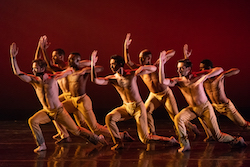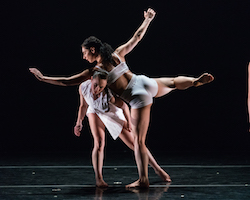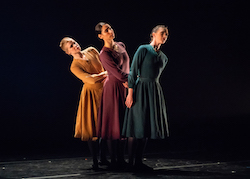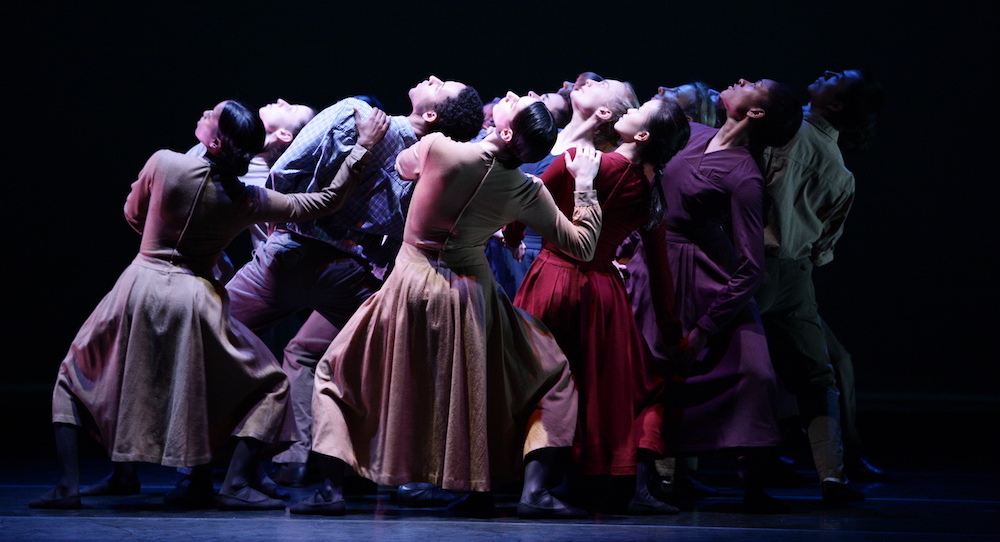The Joyce Theater, New York, New York.
May 13, 2018.

The Limón Dance Company in ‘The Unsung’. Photo by Steven Pisano.
I was able to catch one of the final performances of the The Limón Dance Company during its recent run at the Joyce Theater. Program C of the company’s Joyce season was a great introduction to the company, as it was my first time seeing the company beyond work that had been licensed to other dance companies or universities. The program offered classic work (The Unsung [1970] and Missa Brevis, [1958], both by José Limón), as well as more contemporary work (No Room For Wandering, a NYC Premiere by Yin Yue, and The Body is a House Without Walls [2017] by Colin Connor).
To my surprise, the program started with a Limón-choreographed work, The Unsung, which had no music at all. I found it extremely remarkable how well rehearsed and together the male dancers were, given that there was nothing but breath and noise from movement made with the dancers’ footwork to keep everyone in sync. An homage to Constance Valis Hill, author, dance historian, choreographer, professor and mask maker, the work had significant Native American influences. Comprised of group work and solo work, this piece was a display of fortitude and tenacity of a marginalized population of our country that I quite enjoyed.

Savannah Spratt supporting Brenna Monroe-Cook in The Body is a House Without Walls. Photo by Steven Pisano.
In direct contrast to the first work came The Body is a House Without Walls. The piece started with a very dramatic focal point of what seemed to be a slain lone woman in red. She then became the target of the crowning task of the number by being cut, with scissors, out of her red overdressing. Frances Samson stood out overwhelmingly in this work. With massive lines and impeccable musicality, it was hard for me to keep my eyes off of her.
Most avant garde of the evening was duet No Room For Wandering, featuring Tanner Myles and Jesse Oremski, both athletic but fluid in movement. These dancers were complimentary to each other and really shifted the mood of the evening in a powerful way. Coming from intermission, it was refreshing to be taken from more historic-based moments in the first half of the program, into much more contemporary ones. This shift showed the company’s ability to have a scope of what is being produced in the industry currently, while still presenting work that champions the Limón legacy.

The Limón Dance Company in ‘Missa Brevis’. Photo by Steven Pisano.
Lastly, in the more traditional vein was Missa Brevis. The title of the work, meaning “short mass”, was a contradiction of the length of the work, which I didn’t mind. I took it as an opportunity to really study the nuance and style Limón offered more than halfway through his career. The movement in the work reminded me of a school of fish in the ocean and how one movement of a singular fish is, in fact, the movement of the entire group. I would describe this work as spiritual, a work of love, strenuous in nature.
I really enjoyed the company and the diverse group of dancers whom you often don’t come across in mainstream companies. The group works amazingly well together and does a terrific job of both presenting the classic work of Limón and executing different work that is being commissioned on the company.
By Demetrius Shields of Dance Informa.















